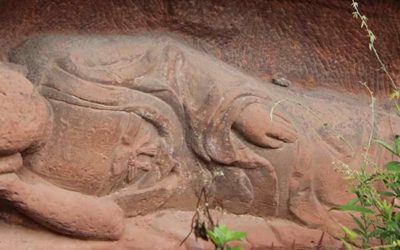Zhuang Nationality in Wenshan Prefecture
Wenshan Zhuang and Miao Autonomous Prefecture lies in the eastern section of Yunnan Province. Scarcely visited by local and international tourists with populations not considered of enough interest by the academic world, is one of the less known prefectures of Yunnan province.
Far from this superficial picture, Wenshan Prefecture possesses an ethnic diversity that makes it one of the most interesting places to travel. Wenshan Prefecture is mainly populated by Zhuang, Miao, Yi and Han nationalities. Any of these nationalities have well differentiated branches, we will introduce here the main branches of the Zhuang.
As is evident to every person that has traveled in the prefecture, there is a great variety of peoples included under the name Zhuang. In fact, among the suggestions to denominate Wenshan prefecture in 1957, three proposals were forwarded:
- To call it Wenshan Zhuang and Miao Autonomous Prefecture.
2. Wenshan Bu Nong, Bu Ya and Miao Autonomous Prefecture.
3. Wenshan Nong, Sha and Miao Autonomous Prefecture.
At the end, as everybody can guess, the first one was chosen. Maybe the reader is now wandering what means Bu Nong, Bu Ya, Nong, or Sha.
All these names are related to the three Zhuang branches that inhabit Wenshan Prefecture: Nong, Sha and Tu.
Most of the Zhuang of Wenshan belong to the Nong branch, about 600,000 people who constitute 50-60% of the total Zhuang population. They call themselves Bu Nong or Bu Xiong, and they can be found in every county of Wenshan. There are also interesting differences among them, which makes them to be known as:
– Nong Dau or Dau, in Guangnan County.
– Nong Yang or Yang in Xichou and Malipo counties.
– Nong Du or Du in Maguan County.
– Nong Dai or Dai in Guangnan County.
– Nong Chun in Maguan County.
The Sha branch has a population of around 300,000 people. They call themselves in different ways, a variation that is reflected in their dresses.
– Bu Yai
– Bu Ha.
– Bu Yue.
The third branch, the Tu, has a population of 100,000 people, and they call themselves Pu Dai. According to their headdress they are divided in:
– «Flat Headdress» Bu Dai or Tu.
– «Piled headdress» Bu Dai or Tu.
– «Pointed headdress» Bu Bai or Tu.
All those who have traveled to Wenshan, and have found that the ethnic clothes of the Zhuang were a labyrinthic issue, now can understand that they reflect an ethnic richness maybe not considered before.
This information has been extracted of the book:
Wang Minfu and Eric Johnson.- Zhuang Cultural and Linguistic Heritage, Yunnan Nationalities Publishing House. Kunming, 2008.
Image: Author’s photograph taken in 2005.
Last posts
Buddhist Immersion from Shanghai: No Need to Board a Plane—Paradise Is Right at Your Doorstep
Buddhist Immersion from Shanghai: No Need to Board a Plane—Paradise Is Right at Your Doorstep Residents of Shanghai eager to learn more about Buddhist art and history often think they must undertake long journeys to reach the sacred mountains of this religion. What...
The Lost Mythology of Ancient China
The Lost Mythology of Ancient China Reconstructing the mythology of ancient China is a painstaking task that tries to characterize some legendary figures and situations based only on the few sentences about them found in later works by philosophers and historians. The...
How a Eunuch Was Created in 19th-Century China
How a Eunuch Was Created in 19th-Century China A wealthy eunuch would purchase a boy from a poor family. This boy had to be between seven and ten years old. He would be kept confined for two weeks and subjected to a very strict diet; he ate little. Use of...







